Do you have a question about the Danfoss AKD 2800 and is the answer not in the manual?
Safety precautions before installation.
Guidelines for physical mounting and cooling.
Connecting mains power to the unit.
Connecting control wiring to the unit.
Initial parameter setup for the motor.
Procedure for starting the motor and checking rotation.
Requirements and connections for Lon network card.
Compliance with safety rules and regulations.
Hazards of unexpected motor starts.
Form for ordering the unit.
Danger of high voltage.
General safety rules to follow.
Hazards of unexpected motor starts.
Description of the control panel and its keys.
Procedure for factory reset.
Process for optimizing motor parameters.
Settings for display language and control modes.
Configuration and characteristics of motor load.
Setting frequency limits and reference values.
Configuration of digital and analog I/O.
Advanced functions like reset and restart.
Configuration for serial communication.
Reading operating data and fault logs.
Physical dimensions for mounting.
Requirements for physical installation and cooling.
General electrical safety and installation rules.
Guidelines for proper electromagnetic compatibility.
Wiring diagrams for mains and motor connections.
Importance of safety clamp for galvanic isolation.
Requirement for external pre-fuses.
Connecting the mains supply to the unit.
Connecting the motor to the unit terminals.
Operation of the RFI filter switch.
How to change motor rotation direction.
Connecting multiple motors in parallel.
Technical data for motor cable selection.
Information on motor thermal protection.
Requirements for proper earth connection.
Connecting DC intermediate circuits for load sharing.
Connecting screened/armoured control cables.
Torque specifications for control cable connections.
Wiring of control terminals and relays.
Displaying output frequency, current, voltage, etc.
Table of warnings, alarms, and trip conditions.
Detailed descriptions of specific warnings/alarms.
Vulnerability to liquids, particles, gases.
Current derating for high ambient temperatures.
Requirements for protective separation.
Emission performance for different configurations.
Device's UL approval status.
Supply voltage and frequency specifications.
Output voltage and frequency specifications.
Starting and overload torque characteristics.
Specifications for digital inputs.
Specifications for analog inputs.
Specifications for pulse inputs.
Specifications for digital/frequency outputs.
Specifications for analog outputs.
Specifications for 24V DC output.
Specifications for 10V DC output.
Specifications for RS485 serial communication.
Specifications for relay outputs.
Maximum cable lengths and cross sections.
Operating frequency range of the converter.
Precision of output frequency display.
Accuracy of start/stop commands.
Time for system response to inputs.
Speed control range without feedback.
Speed control range with feedback.
Accuracy of speed in open loop.
Accuracy of speed in closed loop.
Environmental operating conditions.
Rated and maximum output current.
Output power in kVA.
Motor output power in kW and HP.
Max motor cable cross section.
Rated and maximum input current.
Max power cable cross section.
Recommended pre-fuse ratings.
Unit efficiency rating.
Power loss at full load.
Unit weight.
Unit enclosure type.
Rated and maximum output current.
Output power in kVA.
Motor output power in kW and HP.
Max motor cable cross section.
Rated and maximum input current.
Max power cable cross section.
Recommended pre-fuse ratings.
Unit efficiency rating.
Power loss at full load.
Unit weight.
Unit enclosure type.
Explanation of 4-setup parameter programming.
Index for serial communication conversion.
Explanation of data types for telegrams.
Safety precautions before installation.
Guidelines for physical mounting and cooling.
Connecting mains power to the unit.
Connecting control wiring to the unit.
Initial parameter setup for the motor.
Procedure for starting the motor and checking rotation.
Requirements and connections for Lon network card.
Compliance with safety rules and regulations.
Hazards of unexpected motor starts.
Form for ordering the unit.
Danger of high voltage.
General safety rules to follow.
Hazards of unexpected motor starts.
Description of the control panel and its keys.
Procedure for factory reset.
Process for optimizing motor parameters.
Settings for display language and control modes.
Configuration and characteristics of motor load.
Setting frequency limits and reference values.
Configuration of digital and analog I/O.
Advanced functions like reset and restart.
Configuration for serial communication.
Reading operating data and fault logs.
Physical dimensions for mounting.
Requirements for physical installation and cooling.
General electrical safety and installation rules.
Guidelines for proper electromagnetic compatibility.
Wiring diagrams for mains and motor connections.
Importance of safety clamp for galvanic isolation.
Requirement for external pre-fuses.
Connecting the mains supply to the unit.
Connecting the motor to the unit terminals.
Operation of the RFI filter switch.
How to change motor rotation direction.
Connecting multiple motors in parallel.
Technical data for motor cable selection.
Information on motor thermal protection.
Requirements for proper earth connection.
Connecting DC intermediate circuits for load sharing.
Connecting screened/armoured control cables.
Torque specifications for control cable connections.
Wiring of control terminals and relays.
Displaying output frequency, current, voltage, etc.
Table of warnings, alarms, and trip conditions.
Detailed descriptions of specific warnings/alarms.
Vulnerability to liquids, particles, gases.
Current derating for high ambient temperatures.
Requirements for protective separation.
Emission performance for different configurations.
Device's UL approval status.
Supply voltage and frequency specifications.
Output voltage and frequency specifications.
Starting and overload torque characteristics.
Specifications for digital inputs.
Specifications for analog inputs.
Specifications for pulse inputs.
Specifications for digital/frequency outputs.
Specifications for analog outputs.
Specifications for 24V DC output.
Specifications for 10V DC output.
Specifications for RS485 serial communication.
Specifications for relay outputs.
Maximum cable lengths and cross sections.
Operating frequency range of the converter.
Precision of output frequency display.
Accuracy of start/stop commands.
Time for system response to inputs.
Speed control range without feedback.
Speed control range with feedback.
Accuracy of speed in open loop.
Accuracy of speed in closed loop.
Environmental operating conditions.
Rated and maximum output current.
Output power in kVA.
Motor output power in kW and HP.
Max motor cable cross section.
Rated and maximum input current.
Max power cable cross section.
Recommended pre-fuse ratings.
Unit efficiency rating.
Power loss at full load.
Unit weight.
Unit enclosure type.
Rated and maximum output current.
Output power in kVA.
Motor output power in kW and HP.
Max motor cable cross section.
Rated and maximum input current.
Max power cable cross section.
Recommended pre-fuse ratings.
Unit efficiency rating.
Power loss at full load.
Unit weight.
Unit enclosure type.
Explanation of 4-setup parameter programming.
Index for serial communication conversion.
Explanation of data types for telegrams.
| Model | AKD 2800 |
|---|---|
| Protection Class | IP20 |
| Communication Protocols | CANopen |
| Supply Voltage | 380 - 480 V AC |
| Input Voltage (3-Phase) | 380 - 480 V |
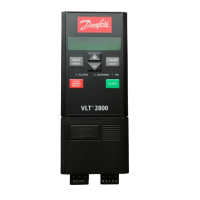
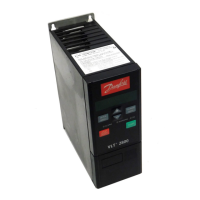
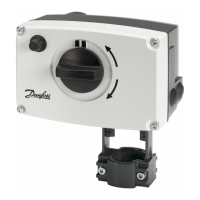


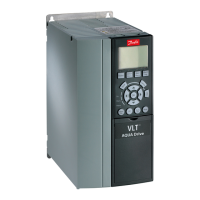
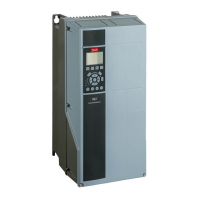
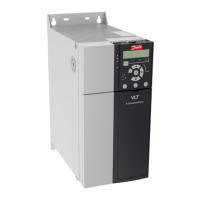
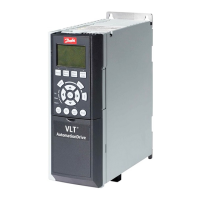
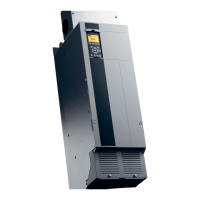
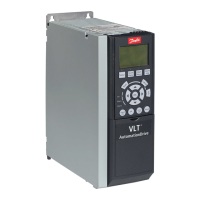

